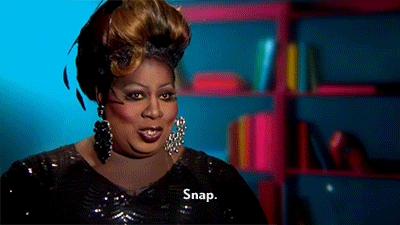
Revisiting this lecture has made me think about the interesting ways that fashion has opened the door for for women to forge their own path in the world. In eras where ladies of a certain social class were expected to marry and not to work outside the home, there were very few socially acceptable ways to be a businesswoman who called the shots. One of the ways was to do it in a "woman's interest" industry like fashion. I wish I could say that this thinking is completely behind us, but we know that married women who work still get asked crap questions about how they can "juggle it all" and there are still lots of jobs and roles that society still expects will be held by a man.
 |
| I DID, ACTUALLY |
Helen Igoe grew up in Minnesota, and left home as an unmarried, old maid at 35. She came to Seattle and started working in a department store, which eventually sent her to Europe as a buyer. In 1910 she opened her own store: the Helen Igoe Shop for Women. In 1912 she married a man from St. Louis. Rather than return "home" to the midwest to be a good little wife, he had to move to Seattle to be with her. While socially she was sometimes referred to as Mrs. George Stalker, her maiden name tied her to her business and she still continued to be professionally known as Helen Igoe. After only five years of marriage his name disappears from the city directories and a quiet divorce request is printed in the papers a year later. She continued to be known as Helen Igoe for the rest of her life. Well, that and an "Innovator," "Fashion Dictator" and "Seattle's Hattie Carnegie."
Louise Schwaebele became Madame Thiry when she married in 1903. She and her husband were from France, but after they married they moved to Nome, Alaska to see about this gold rush everyone was talking about. Frontier life maybe wasn't her favorite thing, so she travelled back to Paris with her young son and got the idea of bringing fashionable things back to sell in Nome and Seattle (at that time you basically couldn't get to Alaska without going through Seattle). That was going well as a little side business, but then her husband returned to France to fight in WWI and he didn't return. Devastated and on her own, expanding her business was one of the few options available to support herself and her son. She moved permanently to Seattle and had a successful shop in the 1920s which sold original designs and imported fashion from France.
There is also, of course, Josephine Nordhoff. She and her husband Edward founded The Bon Marché department store in Seattle. They met when they were both working at a store in Chicago, and married when he was 29 and she was just 16. Two years later they moved to Seattle and started The Bon Marché They both worked hard to make the store a success, but here is a case where I think that if Josephine had died young, gender bias would have given Edward full credit for "founding" the store. As it happened, Edward died in 1899 and Josephine was the one who continued for the next twenty years. She did remarry and have help from both her new husband and a brother-in-law, but she was recognized as one of the founders of the store and one of the keys to its massive success. On the day of her funeral in 1920, all the downtown retailers closed to honor her.
Recently, I've uncovered yet another example, and this one is juicy. Since it is probably going to make its way into my fashion lecture next year I want to not give away everything, so for now I will just call her Ms. X. She was married at 17 and she and her husband came to Seattle right around the turn of the 20th century. In her 30s she gets a job as the head of ladies ready-to-wear at a large Seattle store. After a few years she files for divorce from her husband claiming non-support. The newspaper slyly remarks that "Mrs. X is a department manager for [store]. The directory gives no occupation for Mr. X."
Two years later, her husband attempts to take her employer to court for causing his wife to "leave her home" which "alienated her affections." He insinuates there may have been a romantic connection between his wife and her boss. The case is thrown out because it is discovered that the husband's lawyer hired a blackmailer to tamper with witnesses. I wasn't able to find confirmation that the divorce went through (it was really hard to get one back in the day) but the husband certainly seems to disappear from the picture. The year after the trial Ms. X opens her own shop.
Look, I'm not saying everyone needs to be interested in fashion. If you feel awesome and confident in something that would make a Vogue editor gag SO WHAT. You be you. But when you say dismissively that fashion is "only interesting to women" it starts sounding a awful lot like "things that are interesting to women are automatically less important." And that is intolerable BS. For the women above, fashion was more than "frivolous fluff." It was independence, financial stability, a creative outlet, an opportunity build a business on their own terms, and a way to step outside the limiting roles that society had dictated. It was life.





















